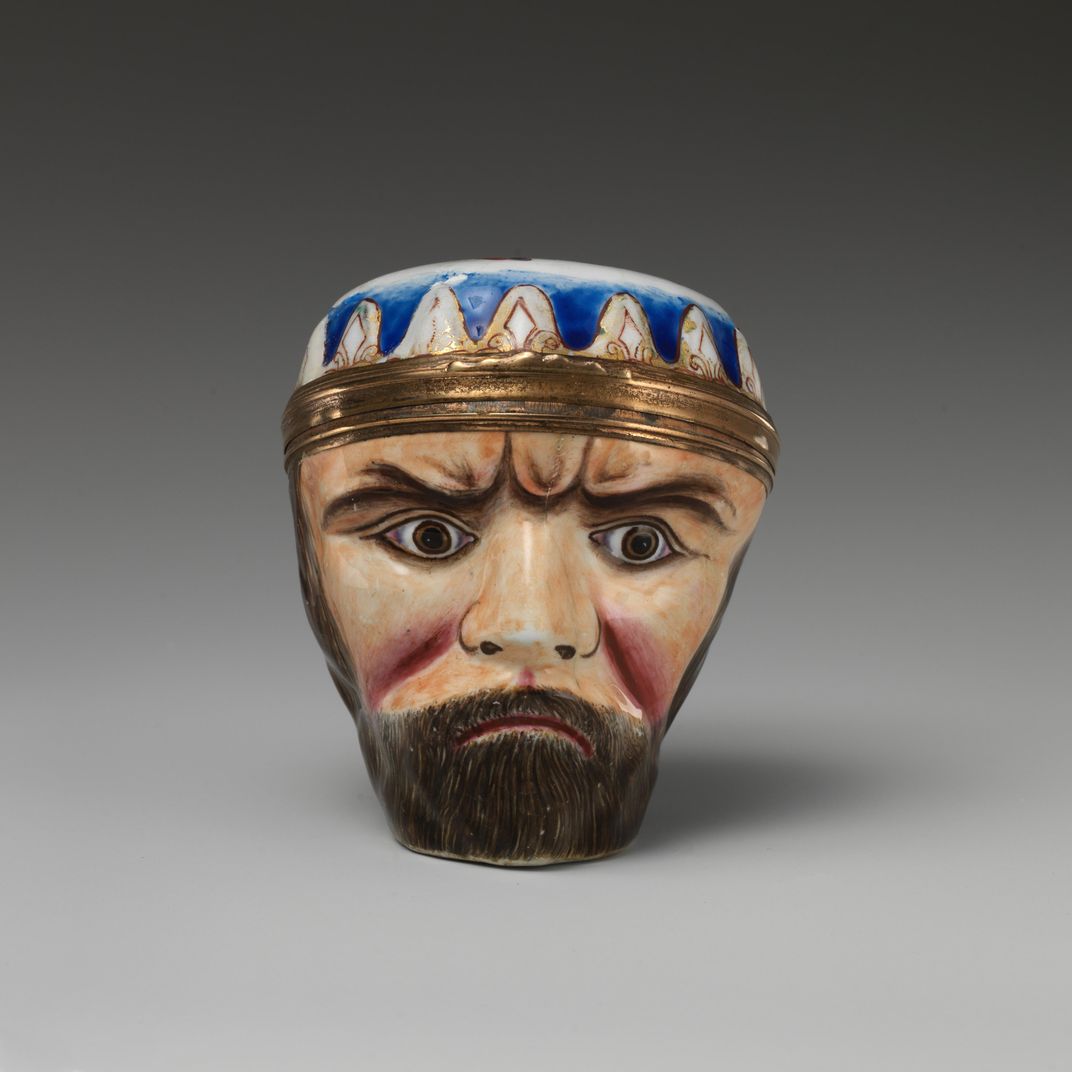A Story of an Empire, Told Through Tea
The Met has revamped its British Galleries, drawing on luxurious artifacts to highlight the country’s history of exploitation
/https://tf-cmsv2-smithsonianmag-media.s3.amazonaws.com/filer/0e/b8/0eb804f4-916f-4020-a528-38b30a528809/2020_march11_birdpot.jpg)
Editor's Note, March 12, 2020: Starting Friday, March 13, the Metropolitan Museum of Art will temporarily close “to support New York City’s effort to contain the spread of COVID-19,” reports the New York Times.
A diverse display of 100 teapots is among the most thought-provoking elements in the Metropolitan Museum of Art’s reimagined British Galleries, which offer a critical assessment of the relationship between imperial luxury and the system of exploitation that made this lifestyle possible.
“Tucked away in each teapot, tapestry, and table is a richer story than you might imagine,” reads the New York museum’s exhibition primer. “… Taken together, they remind us that design is never just about what we see—it’s also about people, politics, and power.”
One section in the galleries is committed to tea, an Asian import almost inseparable from the concept of Britishness. Tea led the British to India, the Caribbean islands and North America, where colonizers exploited locals for labor and resources. In Great Britain itself, the tea craze created a market accessible to a growing middle class of shoppers who wanted exotic goods. That interest, in turn, sparked new ideas among craftspeople trying to sell their wares.
“These galleries are really dedicated to the unsung heroes of the decorative arts, the majority of whom will remain anonymous for eternity because we just don’t know who made these objects,” says curator Wolf Burchard to artnet News’ Tess Thakara.
He adds, “For all the beauty of these objects, the British empire was the backbone of the British economy and the funds made available to produce these things is in part due to the empire and the slave trade—and you have to acknowledge that.”
Tea arrived in the West during the 16th century but only became widespread in Great Britain as of 1600, when the newly chartered British East India Company started establishing colonial trade routes.
As British culinary historian Seren Charrington-Hollins tells the New York Times’ James Barron, the tea trade was built around plantations with terrible conditions, but “nobody cared.” Thanks to “protocol and propaganda,” the majority of consumers viewed the drink as a strictly British product.
“We are thinking deeply about the stories told in our galleries, and how every object on display is an outstanding work of art but also embodies a history that can be read from multiple perspectives,” Max Hollein, director of the Met, tells the New York Times. “A beautiful English teapot speaks to both the prosperous commercial economy and the exploitative history of the tea trade.”
Beyond tea, the other rooms in the British Galleries trace the empire’s history from 1500 to 1900, as represented by artworks and decorative objects. The artifacts featured in the galleries belonged to royalty, politicians, upper class and working Brits alike. The new arrangement sets the display apart from the Met’s previous galleries, which focused only on the luxurious designs of the rich.
/https://tf-cmsv2-smithsonianmag-media.s3.amazonaws.com/filer/b9/d8/b9d8602a-43fd-4088-a310-0e2efe4c45d1/2020_march11_abolitionistpin.jpg)
Now, gold and silver are juxtaposed with ceramics and copper. An 18th-century set of silver tea caddies and a sugar box featuring romanticized images of colonized lands, including an enslaved man working in a sugar field, are displayed beside an abolitionist pin, which shows a man in chains beneath the words “Am I not a man and a brother?”
Elsewhere, a figurine from India depicts a British soldier grasped in a tiger’s jaws. A chess set, meanwhile, pits British colonialists against Indian locals.
Three 18th-century interiors remain on display in the galleries, as do a 17th-century wooden staircase from a demolished Tudor manor and a 19th-century arch dating back to the museum’s early days.
“The previous galleries were of their time,” Burchard tells artnet News. “They were pretty interiors designed to showcase the most wonderful objects that we have in our collection.”
Speaking with the New York Times, he adds that the new galleries allow the Met to tell stories that “we hadn’t addressed before”— in this case, complicating the story of progress by revealing “the steady rhythm of growth through exploitation.”
/https://tf-cmsv2-smithsonianmag-media.s3.amazonaws.com/filer/bf/52/bf526709-dc27-4224-8102-e270c081010d/2020_march11_claypot.jpg)
/https://tf-cmsv2-smithsonianmag-media.s3.amazonaws.com/filer/b0/1e/b01e55c3-64f1-4693-81d5-44fdfed1b497/2020_march11_blueandgold.jpg)
/https://tf-cmsv2-smithsonianmag-media.s3.amazonaws.com/filer/97/76/97767c92-7db3-4440-a95d-6bc8a48d555b/2020_march11_housepot.jpg)
